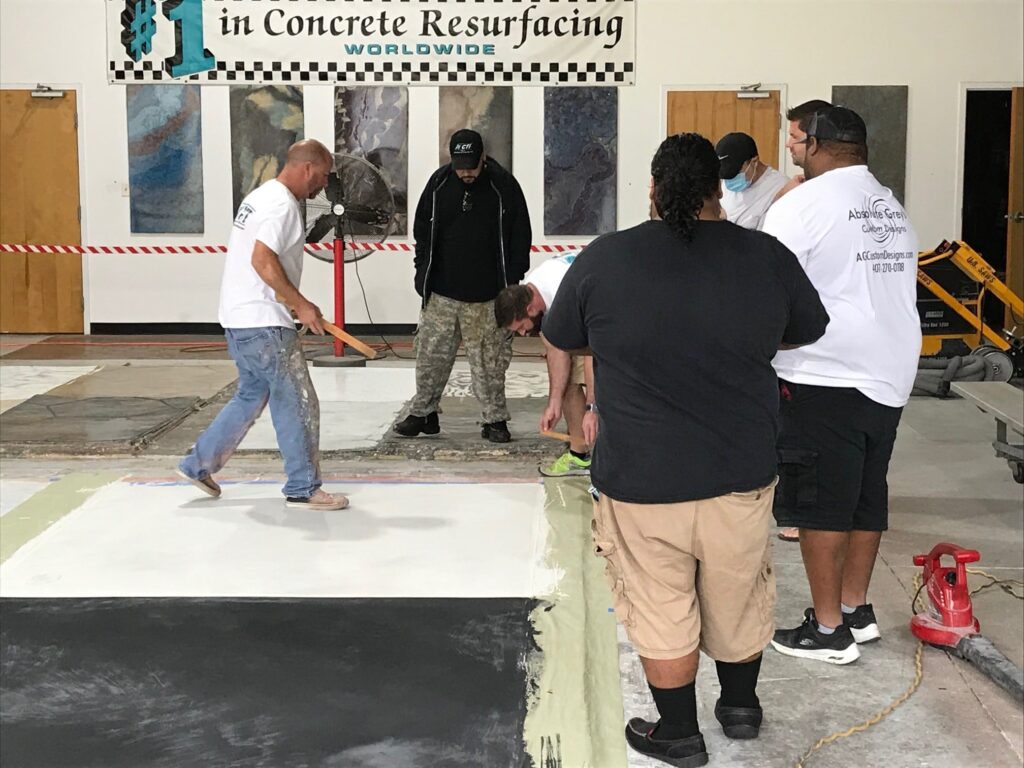It’s time to look at the concrete around the outside of your home. If your pool deck, patio even your walkway or driveway is needing a new look, CTi has the answer for you!
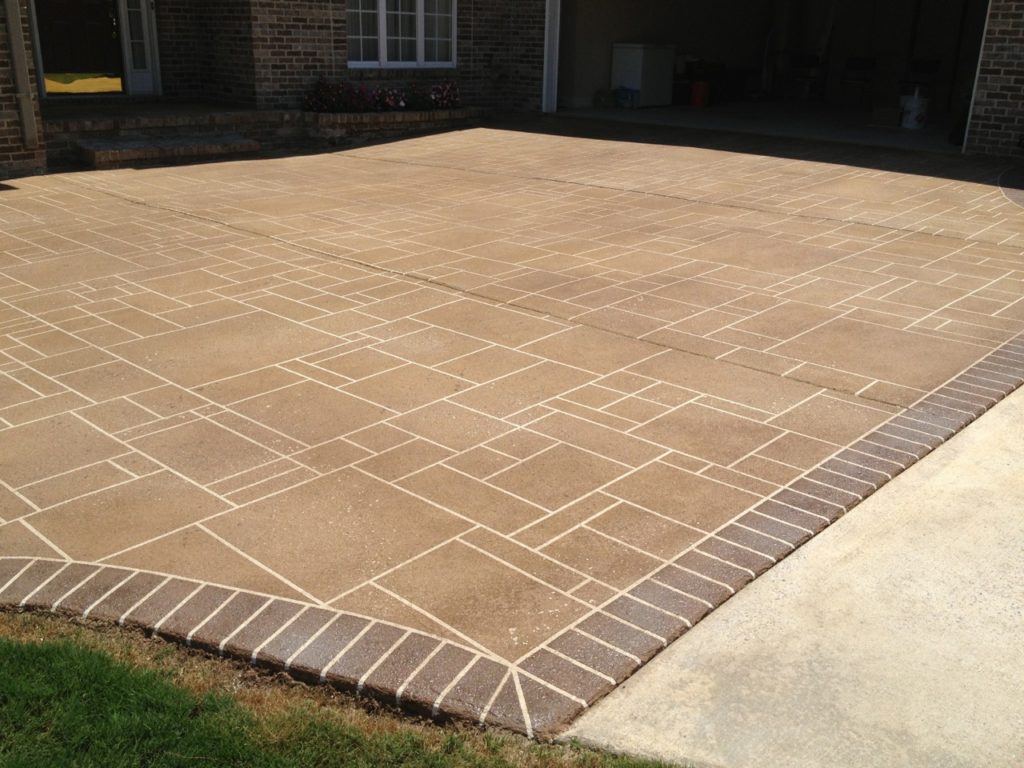
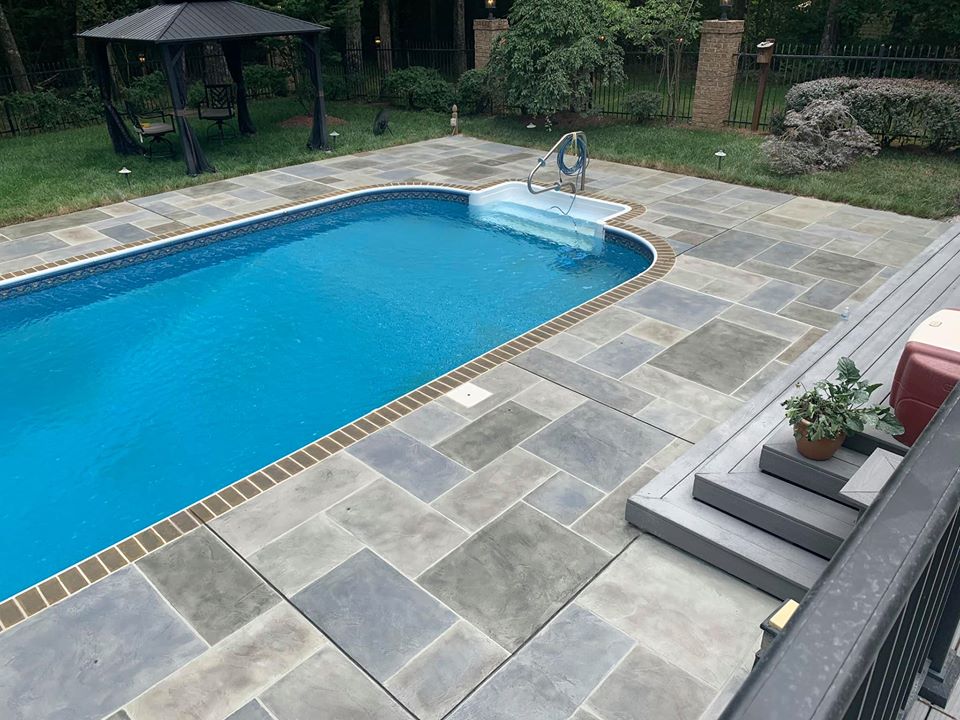

We hear it every year around this time: Oh My Goodness, I’ve got a job started and the rain’s coming down… What do I do? Quit! Stop what you’re doing. Clean up what you can and go home. Pressure wash an upcoming job or go run an estimate. Those are your choices.
Honestly guys, the best defense is a good offense. You’re not only a business owner/operator, you have to be a weatherman as well… and a little common sense goes along way, too. For you guys and gals that have done this for a while, you already know what I’m talking about. Other than tropical areas, weather is fairly predictable because rain travels with a frontal system across the US and your local weather stations (or, www.weather.com) can show you where it’s at on an hourly basis. Even at the job site, if weather is a consideration, I will ask the customer if I can watch the weather station every now and then. Might sound silly to some of you, but it sure saved my butt a few times.
During the summer months here in Florida, we know we have to contend with a daily rain pattern. It’s going to rain somewhere every day, we just don’t know where. So, we’ve learned to adjust to it. Florida’s east coast gets rain mostly in the mornings and the west coast gets rain in the afternoon. We adjust to whatever comes our way. You become aware of and more in tune with the weather the more you do this type work, because it’s part of what you do. Believe me, you do get better at dealing with weather. However , every once and awhile you’ll get caught, it’s a given.
We all have jobs to be completed in a specified time frame and there are going to be many variables you will have to contend with, like: Is this going to be a one, two or three day job? Is rain forecasted on the third day? Can I get the job started and the skim coat down and dry in time so it won’t wash away? If the skim coat survives the rain, will I have to skim over again? Etc, etc. There are many decisions to be made, some of which you’re not even conscious of… you just make them as your experience grows.
Several Suggestions:
1. If you have a job scheduled and you know without a doubt it’s going to rain early that day, don’t start the job. Even if the customer is pressuring you or you’re putting pressure on yourself because of cash flow, scheduling, etc., don’t start the job. No excuses… don’t do it! It will cost you more in the long run if you concede and do it. Talk to your clients and negotiate a new start date. After you’ve convinced them you want the job done right the first time and you care about what you’re doing for them, they will understand.
2. If you have a two-day job in progress and you get caught in a surprise rain storm: As long as your skim coat is dry, shut down everything until it stops. You can then blow all puddles and standing water off the job so it will dry evenly. (If you do leave standing water in various places, those places could be discolored and would have to be re-skimmed.
3. If you’re halfway through shooting a job and the rain pushes in and ruins what you’ve just accomplished, your going to see the following: It will look like milk running off your job everywhere. What this is, is the modifier separating from the grout. That is what bonds your hopper-shot mix to the skim coat. Do yourself a favor and don’t try to save anything you’ve shot. Scrape and wash all ruined material off and clean it up, and start over after everything is dry.
Remember; cutting corners to deal with weather may save you today, but it will cost you tomorrow… either time, money or referrals. In general, do not let your customers dictate how or when you should do your job, and watch the weather reports day and night religiously, until it’s second nature. Sometimes you’re just plane going to get caught in the rain, but common sense will handle most of the problems you’ll face because of it. Have a great summer, stay dry and make some money.
Having quality personnel within your Dealership is crucial to its success. To hire quality
individuals, the first place to look is within. What we mean by this is that the
commitment level and stability of your employee base will directly reflect the
commitment you have to your Dealership. When you are interviewing a potential
employee, think about what is going through their mind. Where are you meeting, what
are you telling them about the position, how secure are they about making a living
working for you? All these and more are flowing through their mind during your initial
visit.
Running a successful CTI Dealership is a full-time commitment. If you haven’t made
this commitment, don’t expect your employees to, you will constantly fight turnover and
motivation problems if you do CTI as a sideline to your “real” work.
Once you have made this commitment, then it’s time to start figuring out what it will take
in order to keep yourself and your new employee(s) busy. Start with an advertising plan,
this will give you an idea of how much advertising or hustling you’ll have to do in order
to keep your people busy and productive throughout the year. A good tool for this is the
Advertising planner and worksheet located in this manual. This should give you an idea
of how much to spend in advertising, how many jobs you will need to sell, and how to
plan the applications to keep your crew busy year round. The biggest motivator and
loyalty builder you can develop within your staff is their ability to count on you to afford
them ability to make a living for themselves and their families.
Who do you look for?
Some tips for recruiting staff that has been shared with us from our Dealership network is
1) Find someone who has a family to support.
2) Find someone who has a mortgage vs. renting an apartment.
3) Your new employee should have a relatively stable job history (no more than an
average of one job per year for the last five years.)
4) Criminal and credit history checks are becoming more affordable, contact PICA for
criminal background checks (normally $50-$75 per check) and Equifax for credit
history check (normally $40-$60 per check). This will give you a better feel for the
personal habits of your new employee.
What do you offer an employee?
Again, our Dealers have shared with us what their biggest selling points are when
interviewing potential employees about their positions.
1) A stable, 40 hour per week job throughout the year.
2) In a majority of the cases, the ability to work during the daytime only.
3) Health care (check into associations such as the Chamber of Commerce or use of a
staffing service to help keep these costs down. Also, figure these numbers into your
overhead before you decide what to pay per hour for your employees. This should be
considered part of their compensation.)
4) Bonuses for weeks where the crew installs above average square footages, for
keeping call backs below a certain minimum, or if the company does over a certain
amount in revenues for the month. These bonuses could be cash, dinner out, or
something as simple as a case of beer.
What should I pay an employee and how?
Although it is difficult to provide a generic number that works throughout the U.S.
regarding hourly labor rates, below is an example that will at least give you a starting
point:
Three person crew operation
Lead man: $15-$20 per hour plus health benefits
Second man: $12-$17 per hour plus health benefits.
Third man (part-time in many cases): $8-$10 per hour no benefits.
Considering that you are paying your lead and second man throughout the year and your
third man is working 20 hours per week on average, your labor cost for the year would
range from $64,480 to $87,360 for their hourly rate annually plus the FICA, and other
taxes associated with having employees along with their medical insurance. This three
man crew, once semi-accomplished, should be able to install a minimum of 2500 square
feet per week. Considering an average year having 45 weeks of installations, your annual
production should be in the range of 100,000 to 125,000 square feet annually which
means your labor cost per square foot with all items included would run 75 – 90 cents per
square foot.
CTI Dealers are split on how to pay their employees. Some pay their employees an
hourly rate while others will pay be the square foot installed. The argument regarding the
square footage rate is that this will create an incentive to boost productivity since a crew
is paid a flat amount regardless of how long it takes them to install a certain job. It also
creates a “flat” overhead expense for the job vs. having the labor become a variable.
Trailer Organization
Keeping your trailer organized not only allows you and your installation crews to be more efficient, but also helps in keeping your CTi products in good condition, extends the life of your equipment and provides a professional look for your current and prospective customers when you’re on the job site. Below are some examples of how to organize a typical trailer, CTi recommends you build out your trailer with the storage and organizational layout that works best for you.
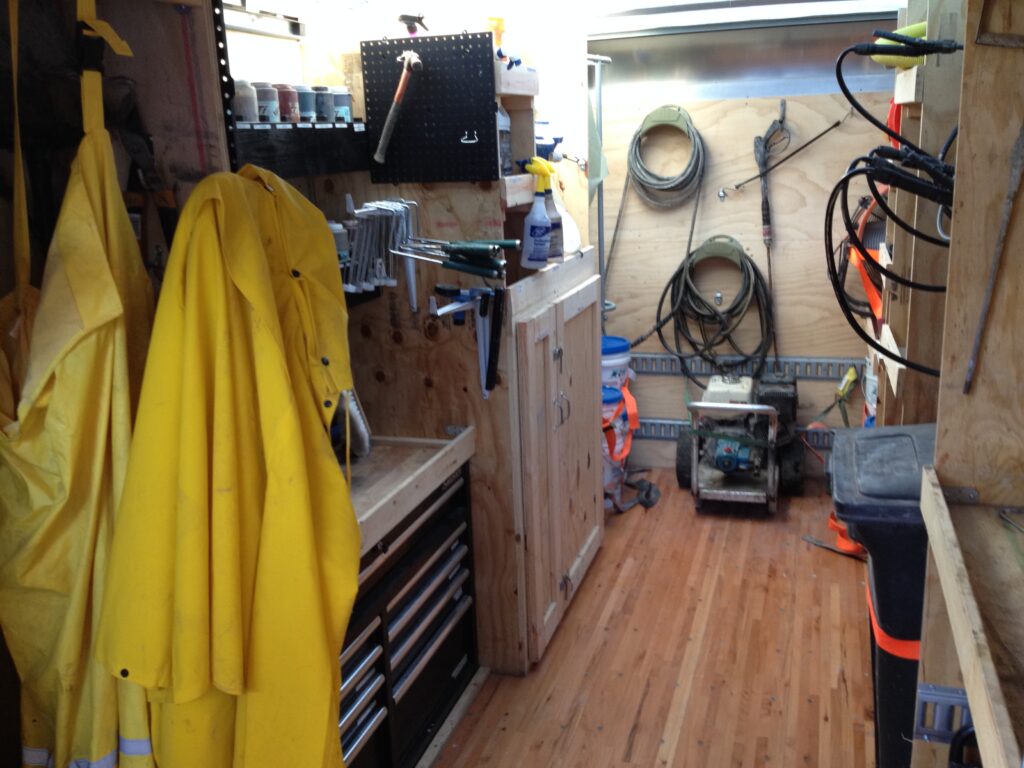
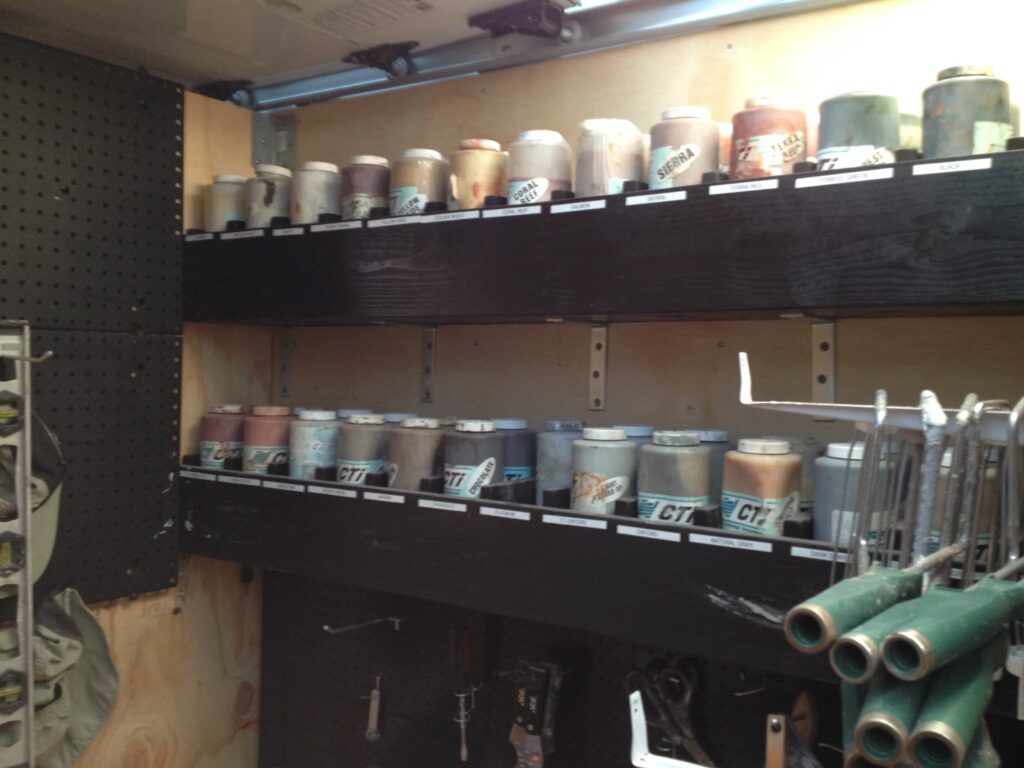
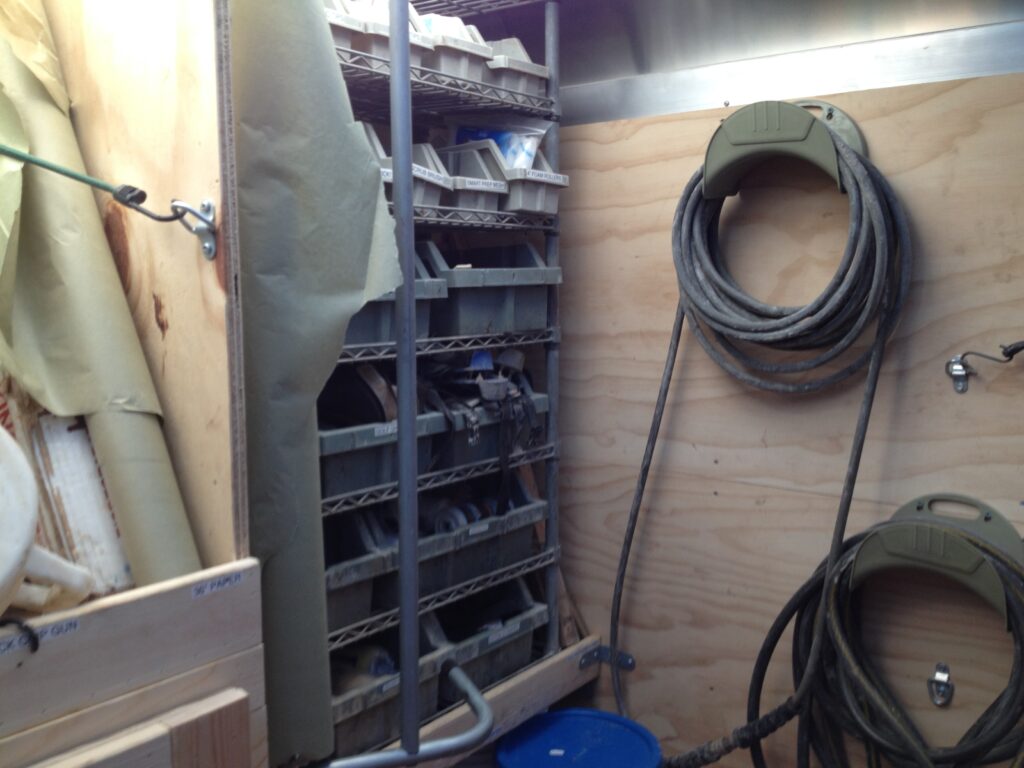
Good, Better, Best…customers have a number of ways in determining which products they want to purchase. Normally however, they balance the cost of the project with the perceived value they get from the product. One way to widen the target zone for the acceptance of your proposal is providing options for the customer.
An easy way to do this is offer them a “Good, Better and Best” solution:
Good is your basic offering – customers who are looking for a cost effective, short-term solution will purchase this option. It may be simply cleaning and sealing the project with a colored sealer to keep any further damage from happening to the concrete. It is your lowest cost solution and the one that provides the basics of getting the job done.
Better is your mid range offering – Many customers who don’t want the cheapest solution but also don’t want to spend the money on the best solution will buy a middle of the road product like this one. This may be a simple design and easy to apply product line. It provides the customer with more benefits than the colored sealer application and a better product overall. Your price for this option would be the middle of the three options.
Best is your top of the line offering – many customers are looking for the best option because they feel they get the best solution. Make this the option with the most benefits, best warranty and best overall solution for the customer’s needs. Crack repair, overall design that truly enhances the area, commercial grade sealer for maximum durability are all ways you can provide the customer the best solution for their money.
Owning a business means making multiple decisions daily. Focus on what you want to get accomplished each day and week is one of the fundamentals in creating a successful business. The challenge comes in staying focused on what is important and not being led astray by putting out fires that are not as important but have become critical. Here are three tips in helping with keeping your focus.
- Know your goals. If you don’t know where your destination lies, any road will take you there is the old adage; this is also true in making your daily decisions. If you know driving revenue is the top priority in accomplishing your goals, the phone call from a prospective client becomes the most important call of the day. If you lose site of this, putting out fires on the job site and calls from employees with mundane questions override this priority.
- Work on one thing at a time. Multi-tasking has become too much of a norm, but research shows the tasks you do in conjunction with each other end up with lower quality outputs. Talking on the phone with a prospective client while trying to trowel out a skim coat ends up with a client who feels they aren’t a priority and a skim coat that probably could have looked better if the focus had been there.
- Do one thing that promotes your goal each day. As a business owner, the last thing you want to feel at the end of the day is that you wasted too much time (or the entire day). Focusing on your goals and breaking your goals down into daily and weekly activities needed for their achievements is a great way to do this. If your goal for the month is $40,000 in revenue, you’re looking for $10,000 weekly or approximately two average jobs. To achieve this goal, you can place advertising that will get the phones ringing, follow up with a client who said they may need your services in the future a few weeks ago, or any one of a number of things that bring you a little bit or a lot closer to achieving this goal. At the end of the day, you’ll feel better about your time management and you’ll also have a more successful business in the long run.
The results from your advertising and referrals provide the life blood of your business. Following up on these inquiries doesn’t have to be hard, but there are a few fundamentals to keep in mind:
- Contact the lead as soon as possible.
- Contact the lead in different ways (phone call, email, text). Different people like communicating in different ways so don’t leave a resource at your disposal unused.
- Refer to the reason you’re contacting the lead when speaking with the prospect or when leaving a message, email or text. (I’m responding to your inquiry through Facebook regarding having the Concrete Technology System installed).
- Continue trying to contact the lead until you get a final answer from the customer, either a firm no or an appointment to come see the job site and provide an estimate.
- Don’t try to sell the product over the phone, email or text. Your goal in following up on a lead is to set an appointment where you can examine the job site and determine the best solution for the customer. Only then can you provide a realistic estimate.
- Set a firm time to meet with the prospect at their home. Make sure anyone who will be involved with the final decision will be available for the meeting. Be on time and prepared for the meeting once it comes around.
- A “Drip Marketing” campaign can increase appointments set as well as number of sales made. A drip marketing campaign is simply a way of methodically putting a message and your company’s name in front of the prospect on a regular basis. These type campaigns have proven to increase the number of sales made from the current lead flow by 15% to 20%.
First Stages of Growth
One of the more common questions I receive as I work with new Dealers is “where do I get my first employees?” This growth normally comes in two stages, stage one, if needed, is getting the first person to help you in your installations.
One of the advantages of the CTi Dealership model is it is not labor intensive. There are Dealers who apply the product by themselves and operate very successfully as a sole proprietorship. The installation process is much easier when you have someone to help you however.
Finding the first helper can come from different sources:
1) A partner in the business
2) Some Dealers will pay folks who work jobs such as Firefighter, Emergency Technician (ambulance), and similar. These folks normally have a schedule with their other job that has them work 2-3 days in a row and then have two days off. This schedule fits well with a CTi Dealership since most residential projects take 2 days to complete.
3) Temporary labor companies also offer the ability to hire someone just when you need them; you can find these type companies by performing a Google search for “Construction labor staffing agencies”. I like to refer to this as an on the job interview for the folks who are working with you. When you find a person who works well on the projects, you can ask for them specifically from the agency. Should they work out consistently, you can then ask to hire them full time; some agencies will charge a fee to hire their workers, but it normally is more cost effective than other forms of finding employees.
4) Job boards, Craigslist, etc. are available as well to help in finding a full time or part time employee. If you are hiring someone, remember your ability to consistently pay them is many times just as important as how much you pay them. Make sure your marketing and sales efforts are securing projects consistently so you can keep this person in the hours they need to have a mutually beneficial relationship.
Stage 2 happens when your business has grown to the point where you need someone heading up the installation crew full time or pursuing new sales inquiries full time. The best way to handle this stage is to first determine which job function you enjoy most (or are best at) .
If you like being on the job sites and working with the products, you can hire a person to speak with customers and pay them a commission (normally 10%) of the sale price of any jobs they sell.
If speaking with customers is something you enjoy, start by grooming your initial helper to become the lead installer on the job site. Many times this transition is simply a matter of finding an additional helper for your new crew leader as you begin to pursue new inquiries full time.
Concrete Technology Inc. prides itself on having some of the most talented, best trained Dealers in the industry. We provide these Dealers with ongoing training in many different formats.
Online training via our Dealer support site, the phone app we provide our Dealers has many different ways to improve their application prowess, our initial Dealer training is available for free to existing Dealers as their companies grow and they want to send additional employees to get better trained and lastly, we provide advanced training on products and applications that make our Dealers more competitive in the field and better able to satisfy the needs of home and business owners across the country.
